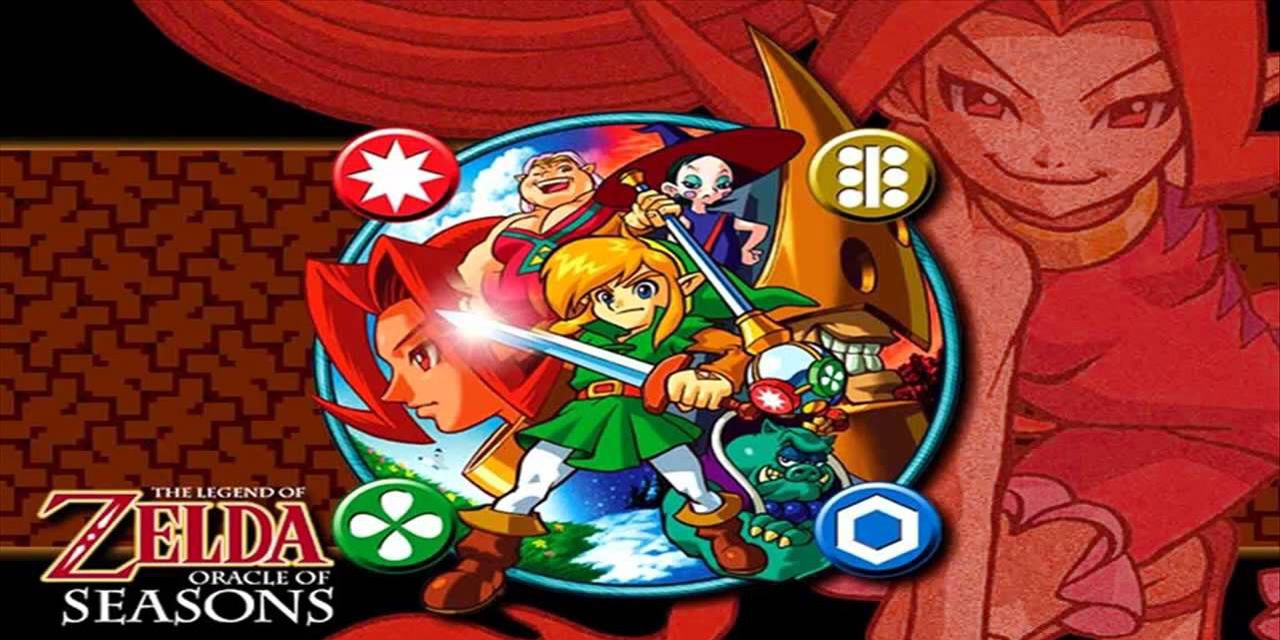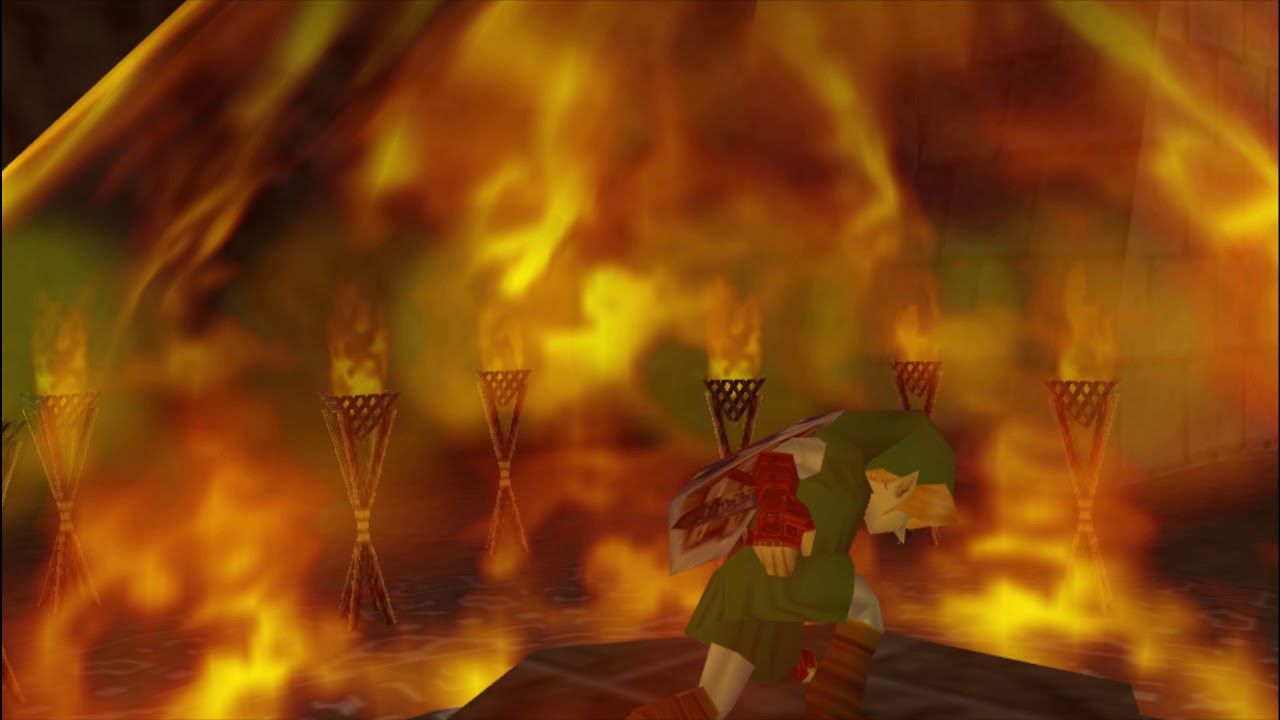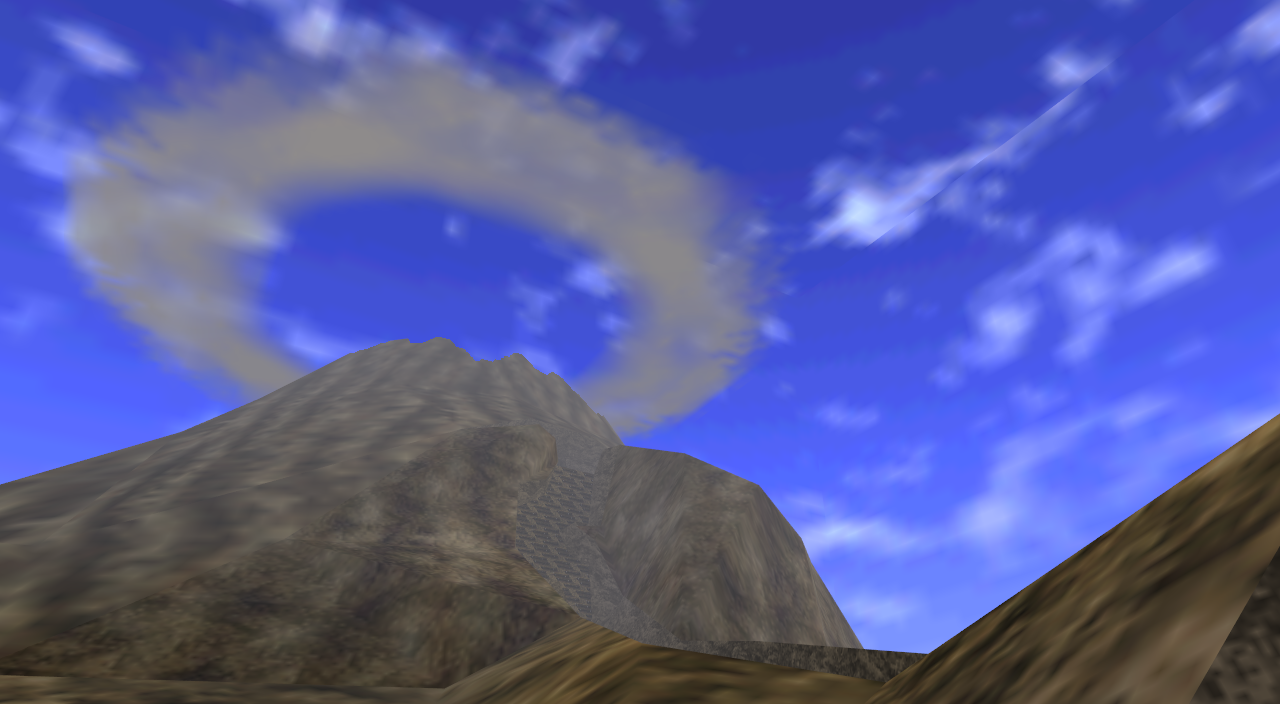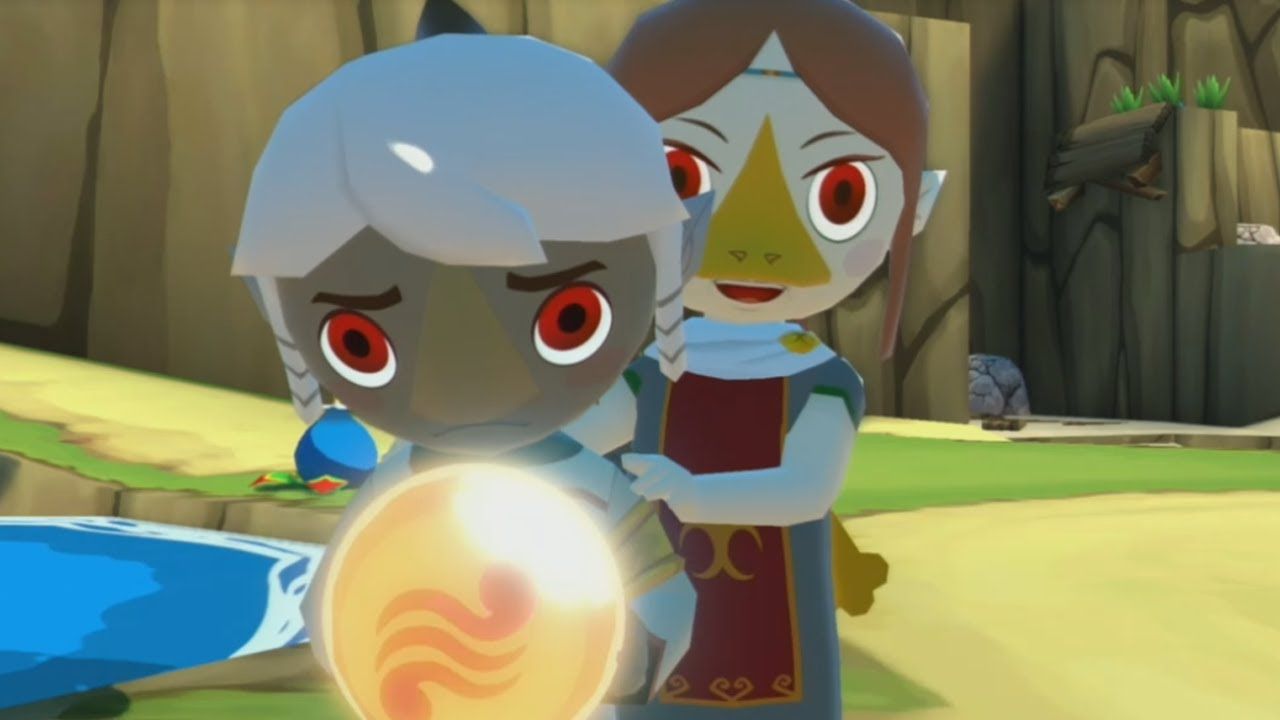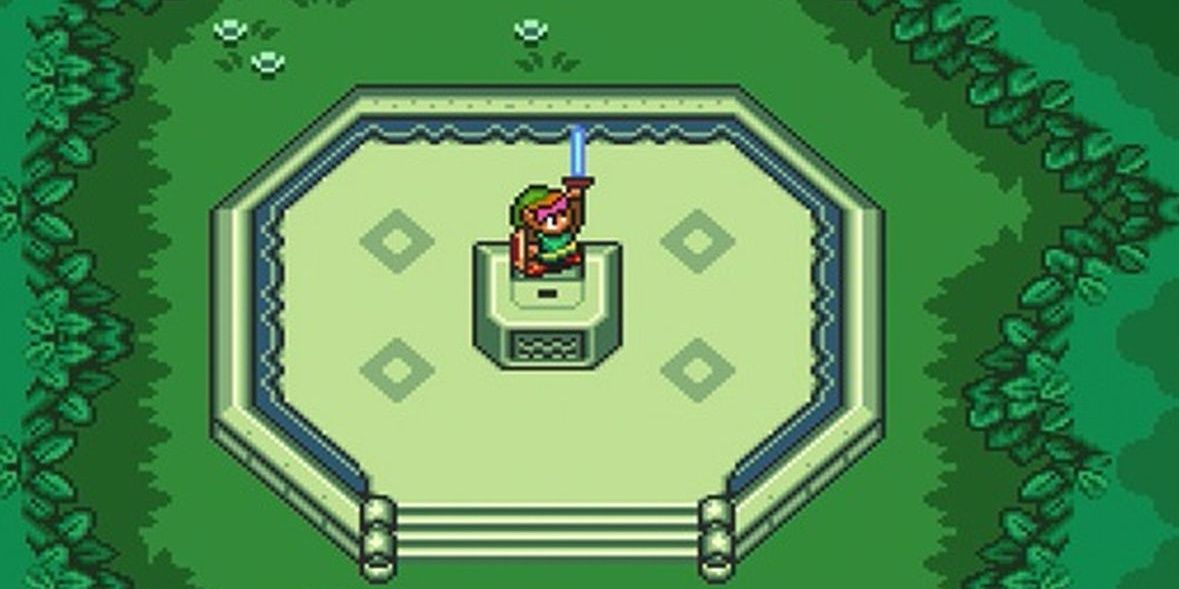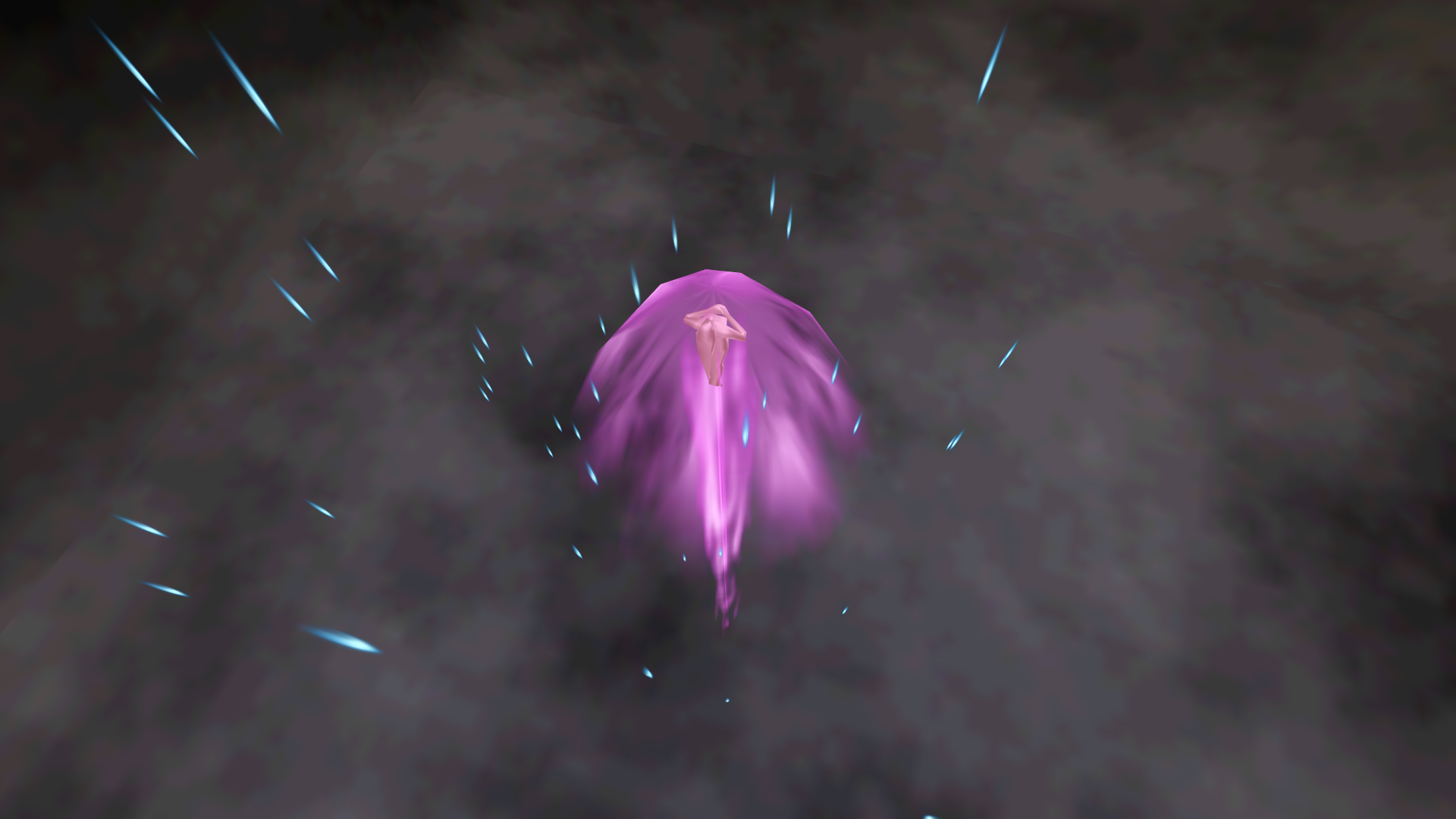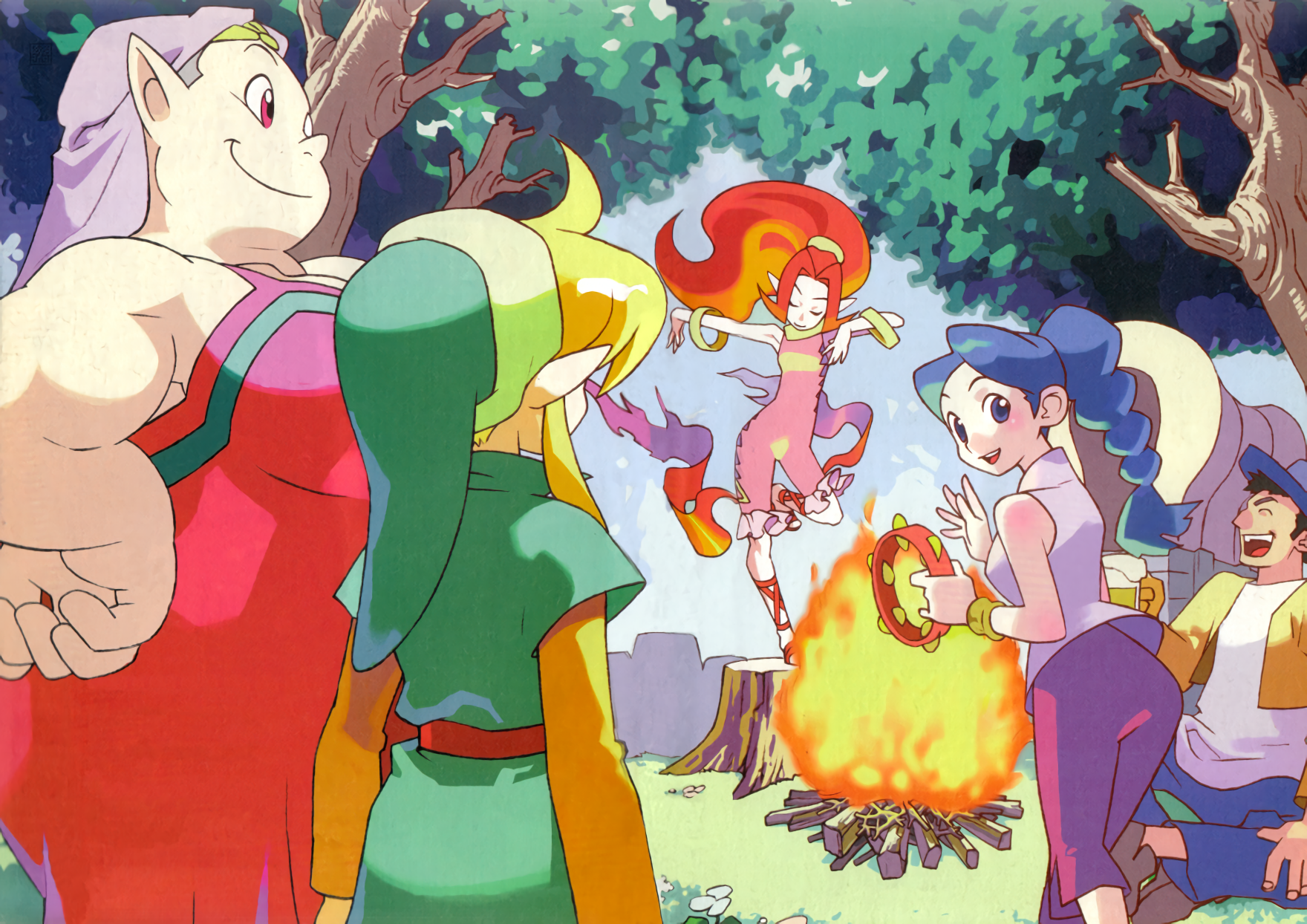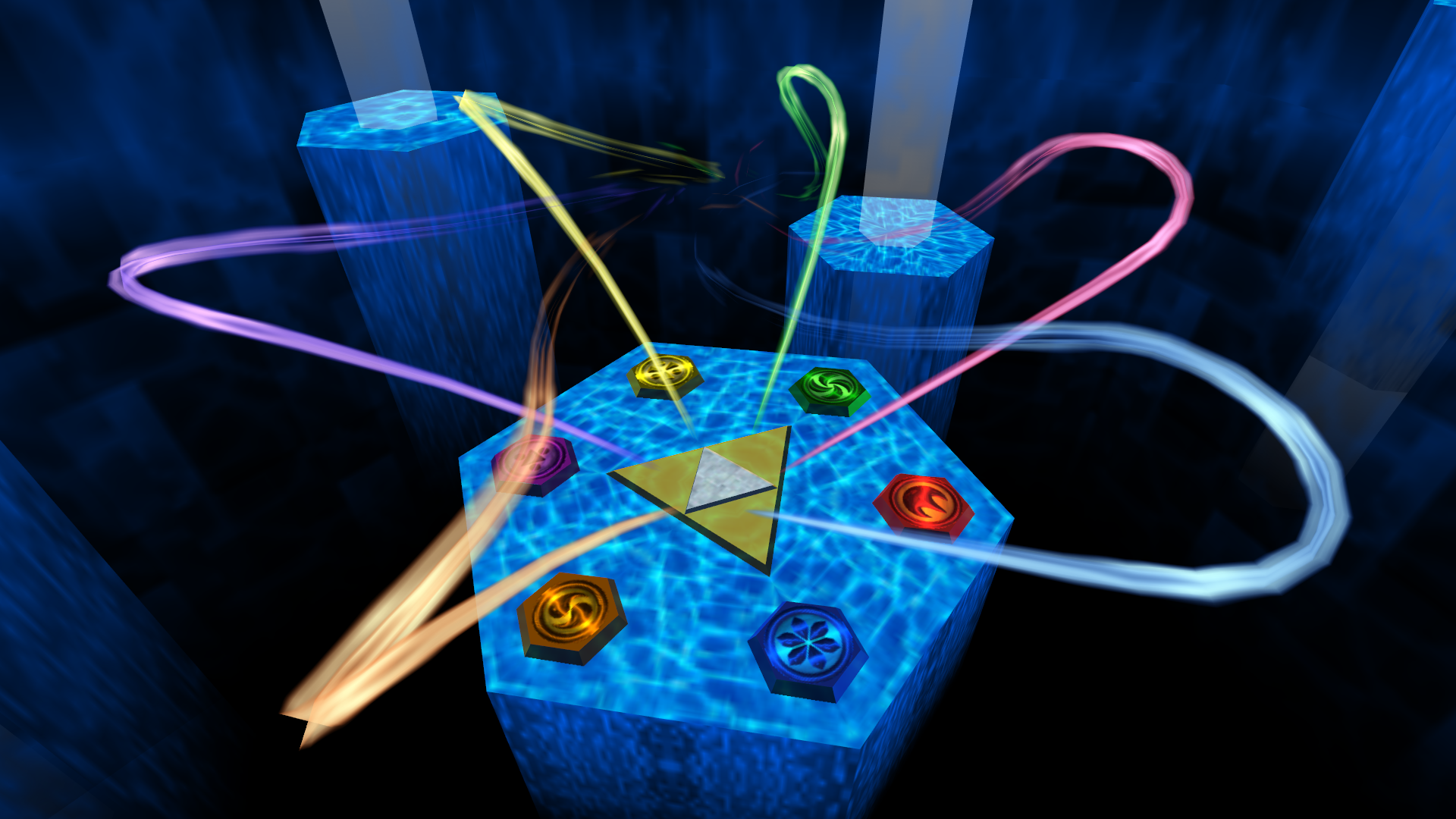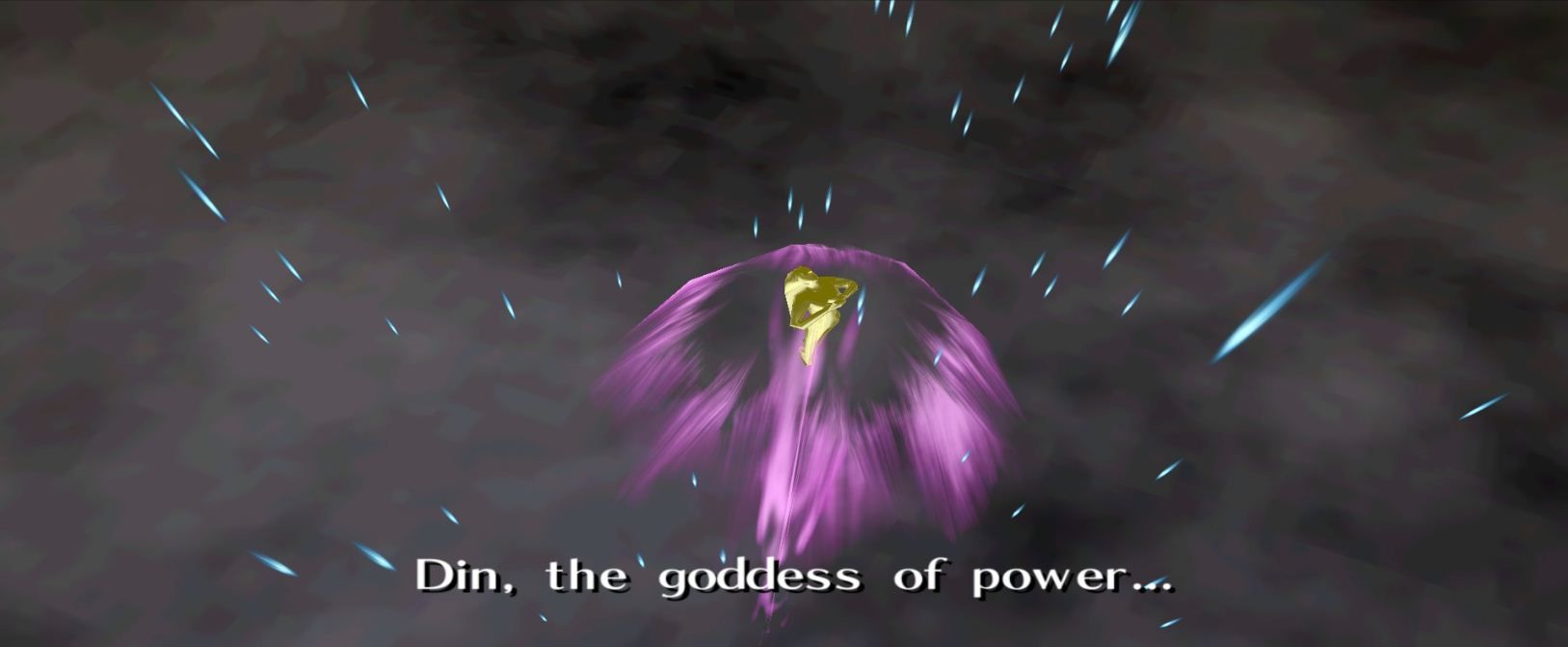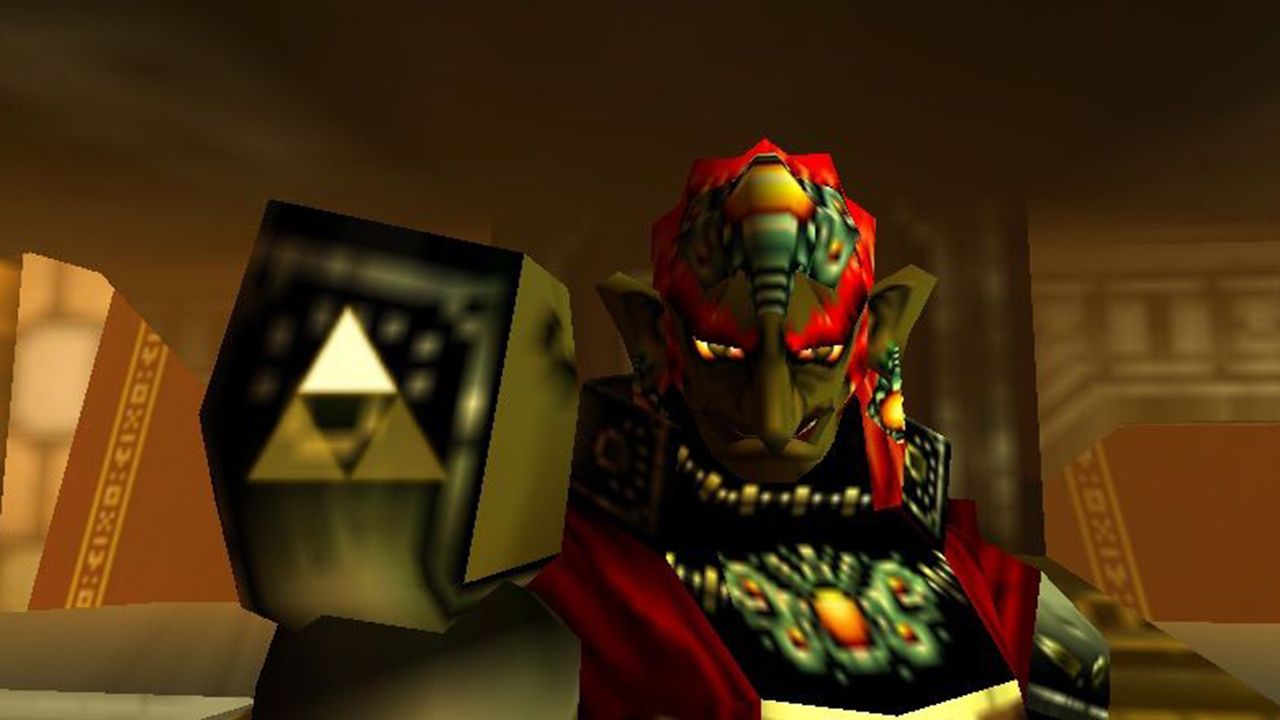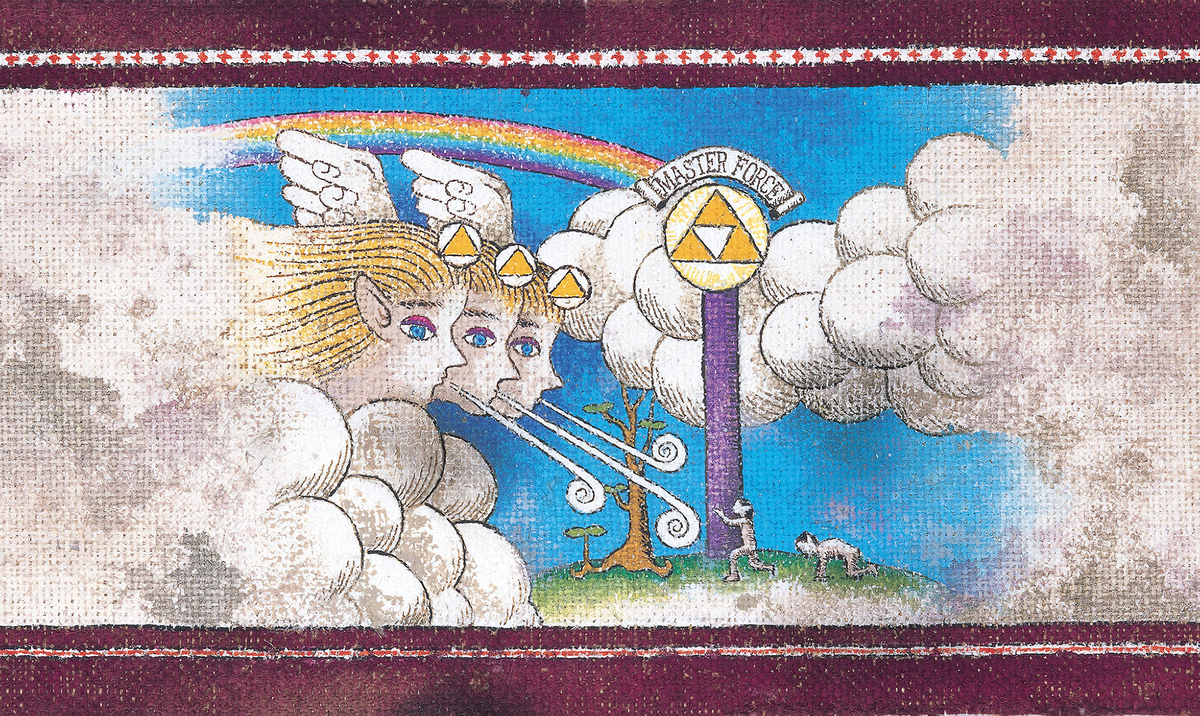The Legend of Zelda’s mythology only grows with each passing game. Originally, the franchise featured Christian iconography, something rather typical for traditional fantasy titles, but beginning with A Link to the Past, The Legend of Zelda started placing emphasis on its own gods and goddesses.
Most notably, it was Ocarina of Time that brought Hyrule’s three Goddesses to life. Of note, Din, the Goddess of Power, became a quick fan favorite. Not only was she implied to be the “leader” of the bunch, representing the top of the Triforce, but her powers were also directly linked to, well, Power. Through Din, the wielder of the Triforce of Power is near unstoppable. Naturally, she’s quite the interesting deity.
10 Din, The Goddess Of Fire
All three Hylian Goddesses are associated with elements, and Din’s is appropriately fire. Although she’s not the Goddess of Fire, her powers are destructive and her associated magic in Ocarina of Time is quite literally called “Din’s Fire.” Plus, she’s color-coded as red, which, according to Nintendo law, means fire.
Din’s associated dungeons always tend to be fire-related as well. In Ocarina of Time, Dodongo’s Cavern and the Fire Temple can both be linked to Din in some regard, whereas The Wind Waker’s Dragon Roost Island features Din’s iconography rather prominently. Plus, the Deku Tree’s descriptive of Din does call upon fiery imagery, but more on that later.
9 She Created The “Red Earth”
Ocarina of Time is an important part of Zelda’s history, not only because it was the game that brought the franchise into 3D, but because it also gave The Legend of Zelda its creation myth.
For such a mythologically-driven franchise, it’s strange that it took five games for Hyrule’s creation to be solidified, but the Deku Tree explains that Din herself created the “red earth” that Hyrule’s foundation is built on. Interestingly, he uses the term “red” to distinguish Din’s “earth” from the life that both Nayru and Farore would give it.
8 The Rito Worship Din
The Wind Waker’s Rito are interesting in general. Not only are they heavily implied to be descended from the Zora, but they also live on what was once Death Mountain, where, instead of worshipping Nayru liked the Zoras did, they worship Din. As Din is often associated with fire, this does make sense given Dragon Roost’s location.
That said, it becomes all the more fascinating when realizing that the Rito would have picked up worshiping Din not through the Goron (as they’re almost extinct in the Great Sea), but through what they left behind on their mountain. It’s a neat bit of subtle world-building.
7 Din Used To Be A God, Not A Goddess
Ocarina of Time may have beat the audience over the head with its depiction of Hyrule’s creation myth, but said revelation wouldn’t have been possible had A Link to the Past not expanded the lore years earlier. Titled Triforce of the Gods in Japan, the game finally brought deities to Zelda.
Only male ones, though. Or, more specifically, gender-neutral deities. While Din, Nayru, and Farore exist as unnamed concepts in the game (something that was heavily censored in the English version), they’re referred to as Gods and not Goddesses. It wouldn’t be until Ocarina of Time where Nintendo would outright confirm Din as a Goddess.
6 Din Is The Last Goddess To Leave Hyrule
When analyzing mythology (fictional or otherwise), it’s important to pay very close attention to the order in which events happen. Just in general, myths are packed with symbolism, often highlighting status, structure, and power in subtle ways. It should come as no surprise that Din, the Goddess of Power, is the last to leave Hyrule.
In many respects, she’s the “Leader” of the Goddesses, so for her to linger over Hyrule the longest is an interesting beat to make note of. She’s also the first to arrive according to the Deku Tree. Given how the Triforce of Power is often a source of conflict within the series, it’s only fitting Din be the Goddess who had the most physical presence in Hyrule.
5 The Link Between The Goddess & The Oracle
All three Goddesses are fairly interesting figures just in a general sense, but they’re made more interesting when one realizes that they have mortal counterparts. In the Oracle duology (and The Minish Cap, their spiritual sequel), Din the Goddess has a counterpart: Din the Oracle.
It’s heavily implied that the Oracles are mortal manifestations of the Goddess (potentially stuck in the same reincarnation cycle as Link, Zelda, and Ganon), but this bit of lore isn’t expanded on. What is expanded, however, is Din’s personality. She’s hotblooded, surprisingly flirty, and nomadic in nature. Fitting for the Goddess of Power.
4 Din Has Flames For Arms
Ocarina of Time’s creation myth is cool and all, but it’s also downright insane. In the myth, the Deku Tree mentions that Din not only created the “red earth,” she created said earth with her “flaming arms.” Simply seeing the Goddess as an Oracle, it’s easy to forget that deities in The Legend of Zelda have never been seen.
At least not in their true forms. Statues tend to depict them as humans, but the Deku Tree’s dialogue (and the imagery of the creation) suggests that there’s more to their appearances than what audiences actually see. With flames for arms, Din would be closer to an endgame boss than a helpful god.
3 Din’s Etymology
Din arguably has the most important name of the Hylian Goddess trio. Directly lifted from the 19th-century French word “dyne,” which in itself is rooted in the Greek “dunamis” which means “force” or “power,” Din’s name actually has a lot of thought put into it. “Din” itself is just a reworded version of “Dyn,” intimately linking her to the concept of power.
Interestingly, straying away from the root words, Din can mean “a chaotic and loud noise.” In Arabic, Din also means “faith” or “religion,” along with “judgment” in Hebrew. The latter two evoke imagery of a powerful god, whereas the former simply leans into Din’s overwhelming power.
2 She Regularly Gives Her Power To Ganon
It’s easy to assume that the Goddesses are on Link and Zelda’s side, but Din pretty regularly gives her powers to Ganon. When she’s not augmenting Ganon with the literal Triforce of Power, she’s seeking out other superpowered bad guys to energize. Of course, the rules of the Triforce are wonky, but it is implied that the Goddesses do have some agency here.
Ganon is explicitly augmented by Din’s Power in The Legend of Zelda, A Link to the Past, Ocarina of Time, and Twilight Princess. While it’s not outright confirmed, he could also be channeling Din in both The Wind Waker and Breath of the Wild, but both games utilize the Goddesses in debatable ways. This is to say nothing of Ganondorf II, Demise, or Malladus.
1 The Closest Thing To An “Evil” Goddess
On that note, it really just goes to show that Din, when it comes down to it, is the closest thing The Legend of Zelda has to an “evil” Goddess. After all, she’s constantly supporting the villains. There are times when Link is wielding the Triforce of Power, but it’s almost always as a result of holding the full Triforce.
When Din is acting as a free agent, she’s happy enough to just hang out with the villains and give Link a hard time. Of course, it’s because she’s associated with power and will naturally find herself attached to the overtly powerful, but she’s the only Goddess who regularly seems to interfere with Link on his quest.

